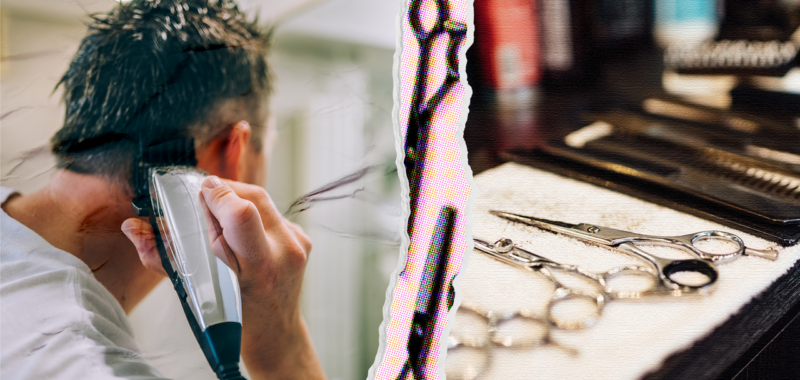Your barber flubbed and here you are Googling “how to cut your own hair.” Maybe you gave this a try already, say, during the pandemic, when you took a spray bottle and a hair clipper to your own head in a fit of split-end desperation. Heck, one time I was so frustrated with my long hair that I buzzed it off in a fit of freedom. (To be fair, I was also too broke to afford a quality cut and was trying to save money.) But no matter your situation, there are plenty of reasons you might find yourself wondering how to cut your own hair.
And if you find yourself wondering that, the man to know is Victor Fontanez or VicBlends, a barber prodigy who created VicBlends Academy, one of the web’s best resources for mastering barbering at home. Before you get started, a word of encouragement. You may not give yourself a perfect haircut right out of the gate, but your skills will improve over time. “Everybody’s first concern about cutting hair is ‘I’m gonna mess something up,’” says Fontanez. “And they’re 100% correct. But it’s like riding a bike—the more that you do it, the better it will get.”
To start, he suggests opting for a simple, no-frills cut and skipping the fade. “People have an expectation that a [self-cut] is going to be just like the barber does it. But when you try to be too crispy, you start messing up your hairline,” Fontanez warns. Here, he helps to shed light on how to cut your own hair, step by step.
How to Cut Your Own Hair
1. Pay attention to your hair grain
Barbers look at the direction that hair grows—known as the hair’s “grain”—before cutting your hair. Clipping with your natural growth pattern (“with the grain”) causes the hairs to be forced down when you’re trimming them which, to the eye, makes them look darker. Clipping against the grain pushes the hairs up, making them appear lighter and sparser. The hitch? Rarely doesn’t all of your hair grow in a single direction—case in point: cowlicks. To ensure that you’re coming from the proper direction each time you buzz, Fontanez offers a hack. “If you don’t know your growth pattern for you, then rinse your hair, don’t style it. See which way it naturally starts moving. See which way it naturally curves too. Take a mirror, check the back of your head, see how it’s falling,” he says says.
2. Understand levers and guards
All professional-grade barber clippers come with a lever, which allows the barber to “open” or “close” the clipper’s teeth. An opened lever will cut hair longer than a closed one. When you close the lever (by turning it all the way down), you are approaching “zero gapping,” a term used to describe the proximity that this closed lever cuts against the skin. “Your cutting blade and your steel blade are really close to each other in this case, which is going to give you a really tight cut,” Fontanez explains. This all matters most when you trim without a guard.
Those guards are the other important thing to understand. Sure, the concept is easy: You add the amount of buffer for the length of hair you want, but in addition to purchasing a device with sturdy, reinforced guards, Fontanez also says that the lever change-up can make a difference on shorter guard lengths, too. “Remember, if the lever is open, it’s always going to cut less, but if the lever is closed, it’s going to cut more,” he explains. “I get a closed #1 [length] buzz. I don’t like an open #1. It’s not the biggest difference, but it’s a difference, especially at short lengths.”
It’s also important to understand what each guard number represents: Most simply put, whatever its number is, corresponds to how many eighths of an inch it is. So, a #1 buzz is 1/8 of an inch. A #2 is a quarter inch, a #3 is 3/8 inch, a #4 is half an inch, and so forth. Important to note, is that a #0 or #1/2 guard are usually the same, depending on the nomenclature of your brand’s guards—each will likely give you 1/16 of an inch.) On the topic of graduating guard lengths, read up on how to fade your own hair, if you insist on trying it.

